Shiva Natarāja (Shiva as Lord of the Dance)
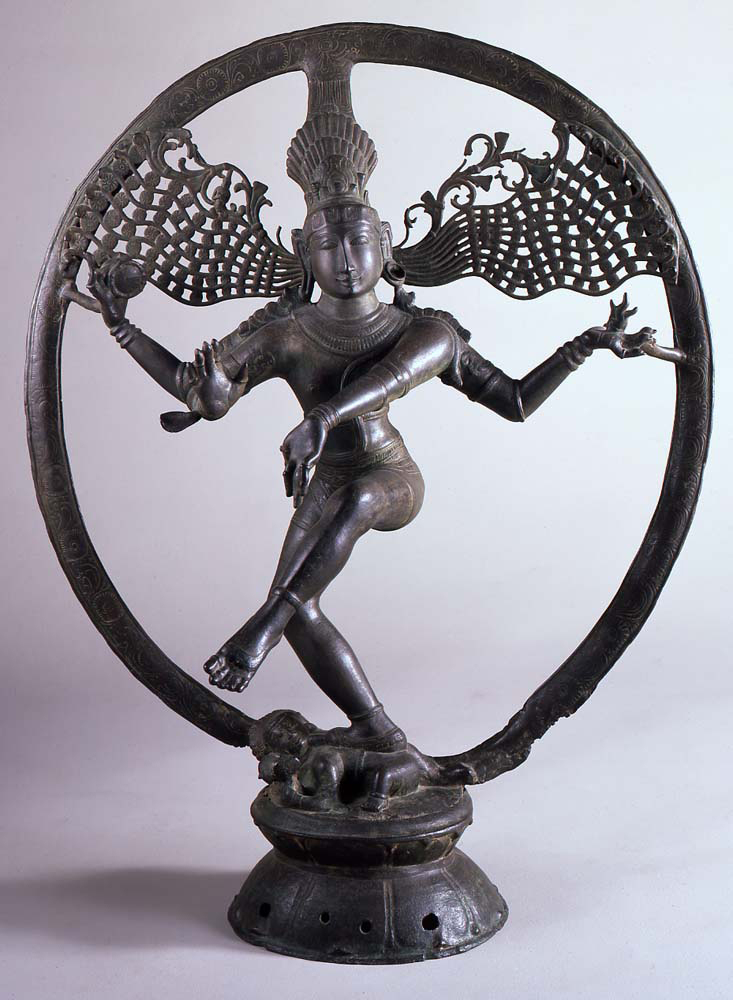
India, Tamil Nadu, Shiva Natarāja (Shiva as Lord of the Dance), 12th century or later, copper alloy, Museum Purchase: Helen Thurston Ayer Fund, public domain, 56.12
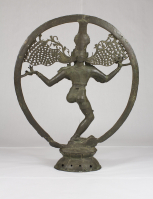
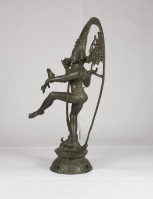
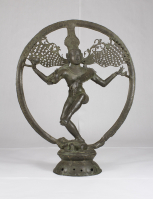
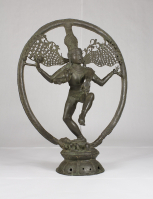
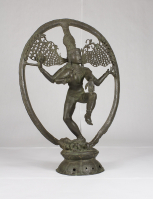
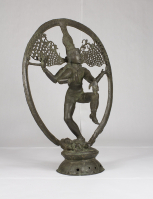
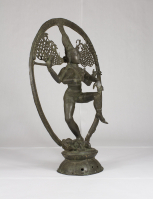
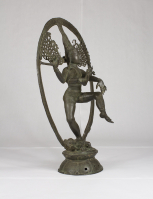
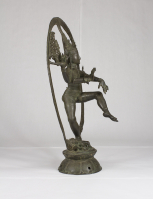
This work is not currently on view.
- Title
Shiva Natarāja (Shiva as Lord of the Dance)
- Related Titles
original language: Shiva Natarāja
translated: Shiva as Lord of the Dance
- Artist
- Date
12th century or later
- Medium
copper alloy
- Dimensions (H x W x D)
36 1/2 in x 29 1/4 in x 15 1/2 in
- Collection Area
Asian Art
- Category
Sculpture
- Object Type
sculpture
- Culture
Indian
- Credit Line
Museum Purchase: Helen Thurston Ayer Fund
- Accession Number
56.12
- Copyright
public domain
- Terms
- Place Made
Created in: Tamil Nadu
In classical Indian culture, dance is a demanding physical discipline. By inducing a state of trance, dance prepares the mind for spiritual leaps. The dancer and the dance become one, re-enacting the union of the individual soul with the transcendent divine. The great Hindu god Shiva, the ultimate yogi, is also the Lord of the Dance, Natarāja.
In his cosmic dance, Natarāja destroys the old universe and creates it anew, the beat of his drum and footsteps marking the pace of cyclical time.
The royal family of the Chola dynasty, rulers of a vast wealthy empire in south India, chose Natarāja as their clan deity in the mid-tenth century. Under Chola patronage, sculpted images of Natarāja reached new heights of aesthetic and technical sophistication. While temple icons were carved from granite, bronze sculptures such as this one were reserved for use in sacred processions. When taken on parade, the icon would have been covered in many layers of colorful silks and flowers.
The symbolism of the Natarāja figure is beautifully expressed in a Chola-period poem:
The sound of his sacred drum awakens the cosmos into being; his uplifted hand of hope sustains and protects it; with his purifying fire, ego is destroyed; his foot planted on the ground is an abode of rest for the tired soul, caught in the binds of illusion; and his lifted foot promises release.
- Exhibitions
2017 Quest for Beauty: The Architecture, Landscapes, and Collections of John Yeon Portland Art Museum









